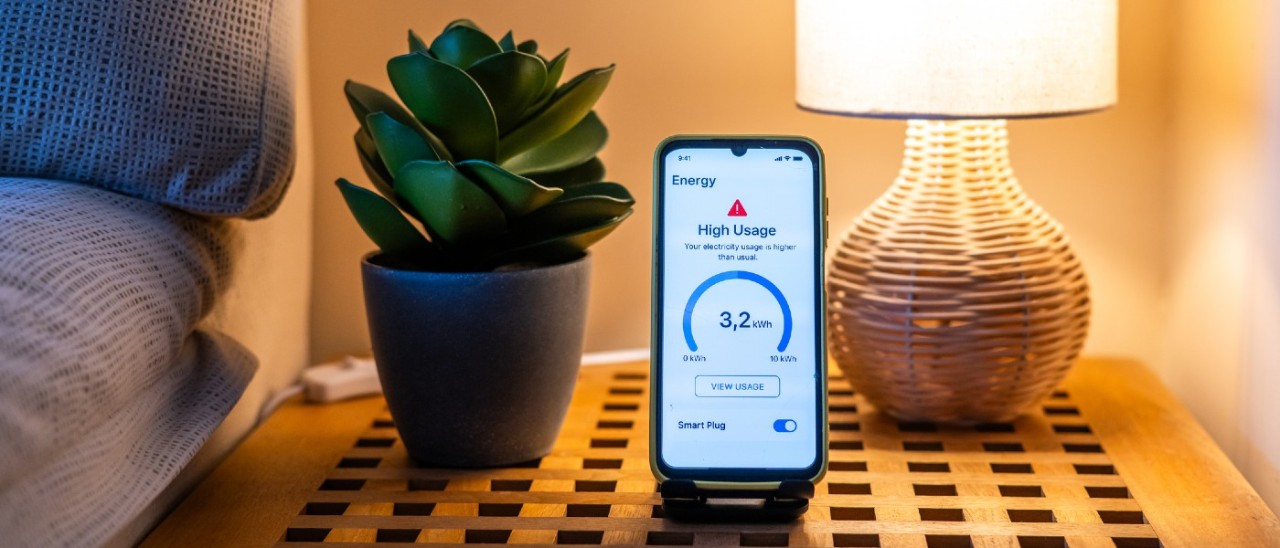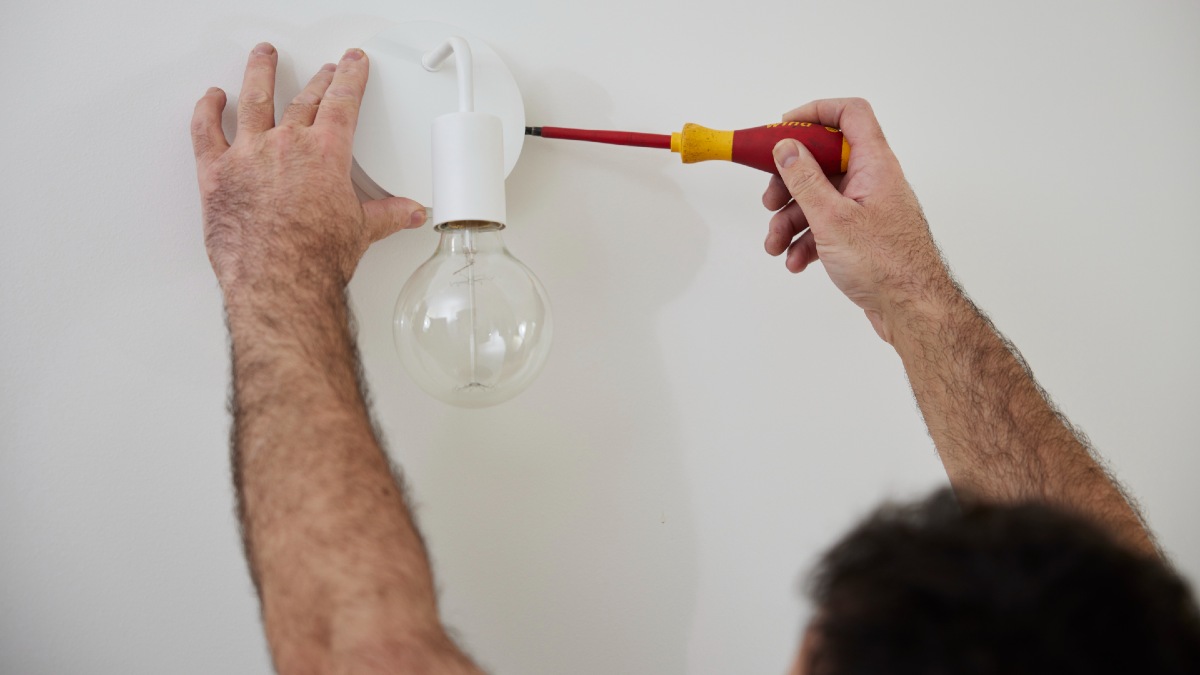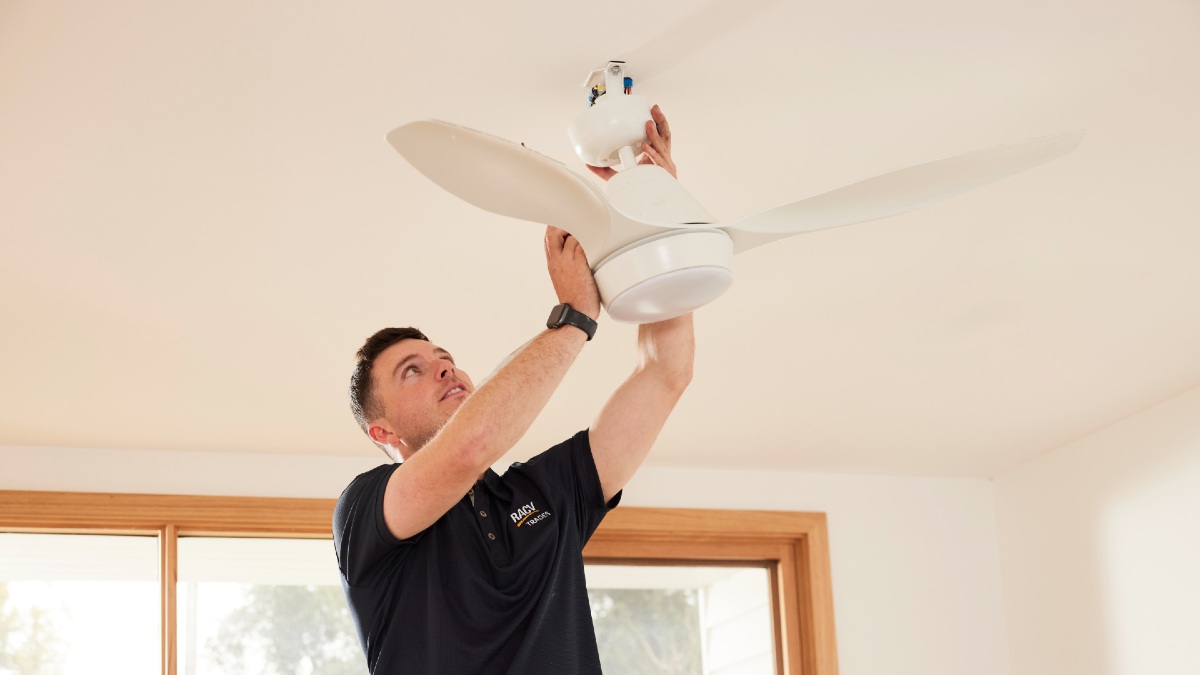Spending more money on certain appliances can save you money in the long run. These are the energy efficient home appliances worth paying for.
The smart home devices that can help you save money

Victorians can reduce their bills by installing smart devices in their homes. From plugs and lightbulbs to sprinklers and thermostats, here’s how tech can help you cut energy usage and save money.
Smart home devices can add an extra layer of security and convenience to your life, from security cameras that you can monitor on your smartphone, to door locks that mean you never have to remember your keys again.
Smart devices can also help you save energy and reduce your bills, allowing you to monitor your energy expenditure as well as automate and reduce usage.
Whether it's heating your house in line with your living habits, watering your garden as needed, or turning off unused appliances to save energy, here are some of the top smart home products that can help save you money.
In this article
What is a smart device?
A smart device is any internet or WiFi-connected electrical item that can be monitored or automated for greater convenience and efficiency.
These devices can range from high-tech gadgets, such as smart speakers, fitness trackers, and security cameras, to everyday household items such as fridges, thermostats, kettles, and washing machines.
If you use smart devices, it's important to be aware of the cyber security risks and learn how to safeguard against digital attacks.
What smart home devices can save you money?
Smart plugs
Have you ever heard of ‘phantom’ or ‘vampire’ energy? It’s when electrical appliances or other gadgets— such as computers, TVs, coffee makers or phone chargers — continue to suck power even when they aren’t in use.
If you want to make your home’s biggest energy hogs more efficient, smart plugs are the way to go. Smart plugs (and power boards) offer a relatively inexpensive way to boost the efficiency of your existing light bulbs, devices and appliances. Simply plug in the appliance – a plasma TV, space heater, lamp, pool pump, or even your air conditioning unit – and program it to cut the power when the device isn’t in use.
Devices connected via smart plugs or power boards can be operated on a timer or manually via a smartphone app. This means you can even monitor them when you’re not home, so you’ll never have to wonder if you left your hair straightener turned on again.
Smart thermostats
Heating is typically the most expensive appliance to run in Victorian homes, accounting for 43 per cent of household running costs according to Sustainability Victoria. This is where a smart thermostat can be a game changer. These nifty devices optimise your home’s heating and cooling, allowing you to remotely control your systems or even customise temperature settings by room.
Leaving work? Turn on your heater via the smartphone app so that you arrive home to a cosy house, or program it to come on automatically. Smart thermostats can even learn precisely how long it takes for a room to reach your preferred temperature, and maximise the use of its energy-saving mode.
Smart sprinkler or irrigation systems
Over watering your garden wastes water and can even damage your plants. Smart sprinkler systems help save you money by adjusting the amount of water used on your lawns or garden based on the soil type you have or even your specific plants’ thirst requirements. They can also check the weather forecast to make sure they don’t give your garden a good drink right before it rains.
Related reading: How mulching your garden can help reduce water use.

Smart lightbulbs are a form of LED bulb that not only use less energy than incandescent or halogen varieties, but can also be automated, scheduled or remotely activated.
Smart leak sensors
According to the Australian government's YourHome website, a dripping tap can waste more than 12,000 litres of water a year, while a badly leaking toilet can waste around 96,000 litres. Installing a smart leak sensor is an easy way to pre-emptively monitor sinks, toilets, taps, or even washing machines for potential water wastage.
If the sensor detects a water leak, it will send a smartphone alert so that you can plug it before it becomes a major problem. Some smart meters will even shut off your home’s water supply to prevent further damage. While it may not save you money on your bills every month, if a leak does occur, it could pay dividends.
Smart solar monitoring systems
Homes with solar PV systems are already on their way to reduced bills. But you can further fine-tune your solar usage and make the most of energy generated by your panels by using a smart solar monitor.
Most solar panels come with some form of monitor, but this can be quite rudimentary and often is installed as part of the inverter or battery. More advanced, smart solar monitors come with wireless connectivity that allows you to monitor energy usage, grid feed-in, and detect issues early.
For homes that additionally have solar batteries, monitoring systems can also help manage those by analysing and optimising charge and discharge.
Read more: Solar panel and battery rebates available in Victoria
Smart light bulbs
Lighting accounts for up to 10 per cent of the average Australian household electricity budget according to energy.gov.au. One of the easiest energy-saving smart home solutions is to convert your regular light globes to smart globes.
Smart bulbs can be motion activated, remotely controlled, automated, or even scheduled, meaning you won’t have to worry about forgetting to turn them off when you exit a room. Sensors also mean they’ll automatically dim or swith off when there is sufficient daylight.
Smart bulbs are also LEDs, which use around 75 per cent less energy than incandescent globes and last five to ten times longer, greatly reducing replacement costs and the number of light bulbs ending up in landfill. Even if you don't choose smart bulbs, replacing incandescent bulbs with regular LED bulbs can greatly reduce the amount of energy used by your lights.
If you also get a smart dimmer switch, you can reduce energy usage even further by restricting the flow of power to the bulb.

Ceiling fans are an underappreciated climate-control appliance, with smart models now available that spin only when a person enters the room.
Smart ceiling fans
If you want to cool down or warm up without turning on your split system, ceiling fans are a cost-effective alternative to help shift the temperature dial. Make them even more efficient by installing smart fans fitted with motion sensors so they’ll only spin when they detect someone in the room.
Don't forget about your fans in winter either - fans with a 'winter mode' help reduce heating costs by circulating warm air throughout a space, making it easier for your heater to keep a consistent temperature.
Read more: How to minimise energy bills during hot weather
Smart shades and blinds
Windows can be a big source of heat transfer in your home, particularly if you live in an older home with single-glazed glass. This can result in freezing cold winter temps and overheating in summer. That’s where smart shades come in. Smart shades (or blinds) can operate on a schedule and be programmed to open or close depending on how much light you want to allow into your home.
They can also be set to energy saving mode so they’ll automatically close when your windows start heating up.
Read more: Everything you need to know about double-glazed windows
Smart energy monitors and in-home displays
Still can’t figure out why your energy bills are sky high? An energy monitoring system is typically installed at your mains panel where it automatically sends detailed, real-time information about appliance energy consumption straight to your phone.
Energy monitors are different from in-home displays, which are like an easy-to-read version of your meter. In-home displays are handy as they let you see a clear report of how much power you’re using on a day-to-day basis and often whether you're currently in a low or high usage period. They also currently attract a small rebate through the Victorian Energy Upgrades program.
Unlike energy monitors, however, they typically do not show the energy usage of individual appliances. Using both an energy monitor and in-home display is one of the easiest ways to stay on top of your household's usage - and consequently reduce expenditure.
Can renters install smart home devices?
Yes, renters can use some types of smart home devices in their home without having to get the consent of their rental provider. These include smart plugs, LED lightbulbs that don't require a new fitting and energy monitors.
Other devices may require your rental providers consent to install.
Read more: The must-know minimum standards for rental properties in Victoria


